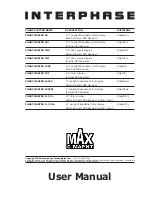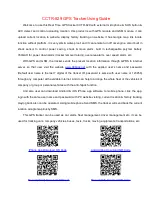
190-01263-01 Rev. A
Garmin G2000 Pilot’s Guide for the Cessna T240
401
Hazard avoidance
SY
ST
eM
o
ver
vie
W
FL
iGHT
in
ST
rUM
en
TS
ei
S
aU
dio
&
cn
S
FL
iGHT
M
ana
G
eM
en
T
Hazard
av
oid
ance
a
Fc
S
addi
Tiona
L
Fea
TU
re
S
a
PP
endice
S
inde
X
6.5 terrain Svt
WarninG:
Do not use Terrain SVT information for primary terrain avoidance. Terrain SVT is intended only to
enhance situational awareness.
note:
Terrain data is not available when the aircraft is outside of the installed terrain database coverage
area.
note:
If the TAWS-B option is installed, it will take precedence over Terrain SVT.
Terrain SVT is a terrain awareness system included with the Synthetic Vision Technology (SVT) system. It
provides visual annunciations and voice alerts to indicate the presence of threatening terrain and obstacles relevant
to the projected flight path. For detailed information regarding SVT, refer to the Flight Instruments section of
this Pilot’s Guide.
Terrain SVT does not comply with TSO-C151b certification standards. It increases situational awareness and
aids in reducing controlled flight into terrain (CFIT) and obstacles. Do not confuse Terrain SVT with a Terrain
Awareness and Warning System (TAWS). TAWS is more sophisticated and robust, and it is TSO-C151b certified.
Although the terrain and obstacle color map displays are the same, TAWS uses more sophisticated algorithms to
assess aircraft distance from terrain and obstacles and provides additional alerts.
Terrain SVT does
not
provide the following:
• Premature Descent Alerting (PDA)
• Excessive Descent Rate (EDR)
• Negative Climb Rate (NCR)
• Altitude Voice Callout (VCO)
Terrain SVT requires the following components to operate properly:
• Valid 3-D GPS position
• Valid terrain database
• Valid obstacle database
Terrain SVT uses terrain and obstacle information from government sources. Terrain information is based on
terrain elevation information in a database that may contain inaccuracies. Individual obstructions may be shown if
available in the database. Garmin verifies the data to confirm accuracy of the content, per TSO-C151b. However,
the displayed information should never be understood as being all-inclusive and data may be inaccurate.
Terrain SVT uses information from the GPS receiver to provide a horizontal position and altitude. GPS altitude
is derived from satellite measurements. GPS altitude is then converted to the height above geodetic sea level
(GSL), which is the height above mean sea level (MSL) calculated geometrically. Terrain SVT uses GSL altitude to
calculate alerts. GSL altitude accuracy is affected by satellite geometry, but is not subject to variations in pressure
and temperature that normally affect pressure altitude sensors. GSL altitude does not require local altimeter
This manual downloaded from http://www.manualowl.com















































